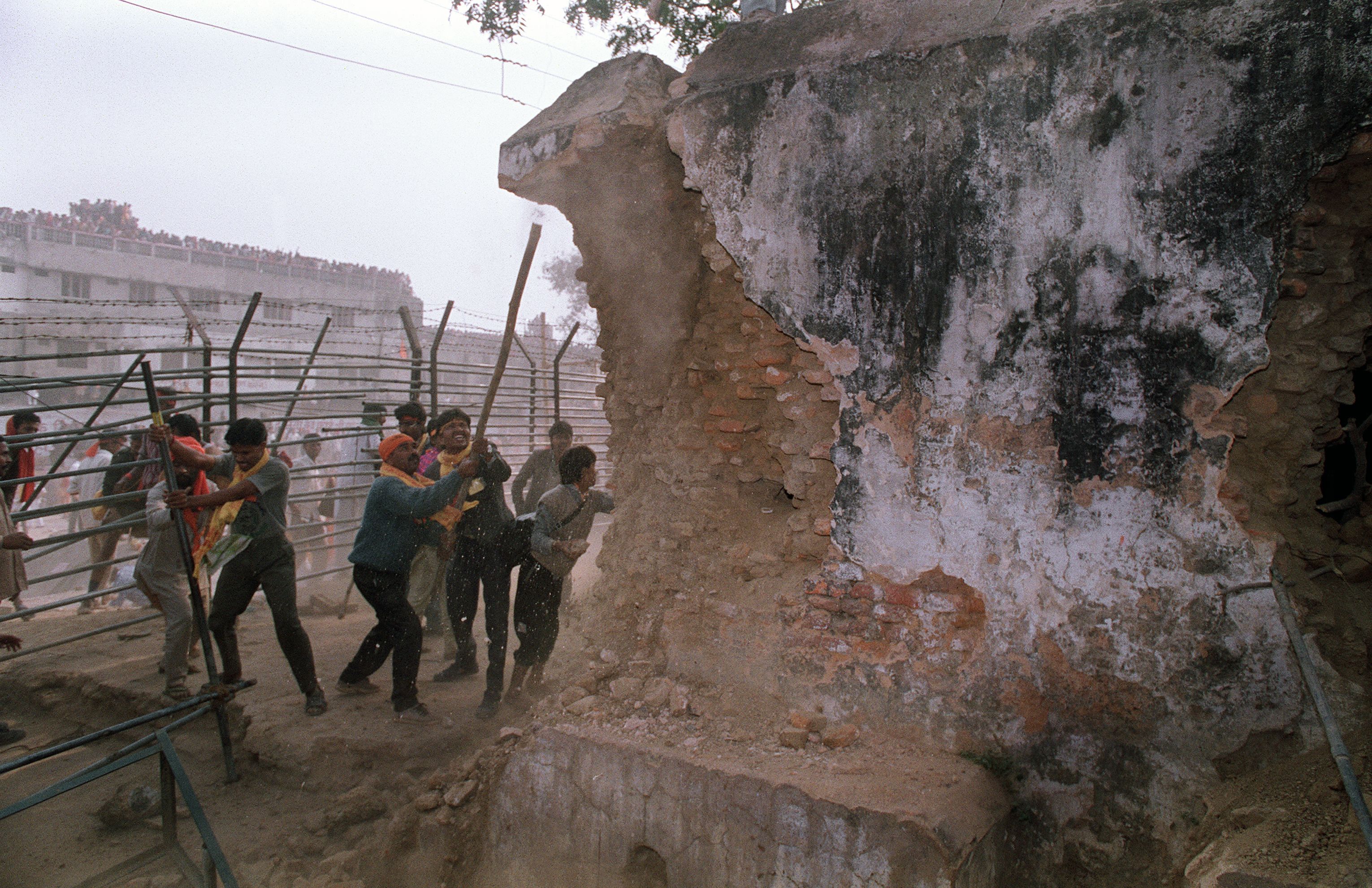
A seven feet high grill-brick wall set up by the British more than 150 years ago to separate the places of worships for the Hindus and Muslim at the disputed Babri Masjid was only a smokescreen as it failed to resolve the conflicts between the two communities, says the Supreme Court.
Hindu's never accepted the artificial division and the Muslims had contentious access to the inner areas, the top court said on Saturday in its landmark ruling.
The contentious site was a flashpoint of continued conflagration over decades, the first of which occurred in 1856-57.
In order to maintain the law and order, the colonial government erected the grill-brick wall separating the premise in two parts – an inner portion to be used by the Muslims and an outer courtyard with structures like Sita Rasoi and Ram Chabutra to be used by the Hindus.
The arrangement, however, didn't solve the problem. For the Hindus, the entire complex as a whole was of religious significance and an artificial demarcation didn't obliterate their belief in the relevance of the Garbh-Grih being the birth-place of Lord Ram whereas Muslims' access to the inner courtyard was through an area which was in the control of the Hindus.
As evidence, the SC cited the admission of a Moazzin of the Babri mosque in his complaint dated November 30, 1858, against one Nihang Singh. The Moazzin admitted that the symbol of (Ram) Janamsthan had been there for hundreds of years and Hindus offered puja inside the three-domed structure.
The apex court cited testimonies from the past suggesting that Hindus offered prayer standing at the railing by looking towards the sanctum sanctorum. The judges also noted Hindus had multiple points of worship within the premise.
One of the earliest evidence of namaz being offered at the disputed site is documented in an application dated November 5, 1860, filed by one Rajab Ali for removal of the Hindu Chabutra. The application indicated that the Azaan by the Moazzin was met with the blowing of conch shells by the Hindus.
The oral witness accounts of the Hindus, on the other hand, show their faith and belief that the Garbh-Grih was the birth-place of Lord Ram.
The railing was built in an effort to maintain peace at the site. The peace, however, remained elusive and the controversy entered a new phase on an intervening night December 22-23, 1949, when the mosque was desecrated by a group of 50-60 people who broke open its locks and placed idols of Lord Ram under the central dome.